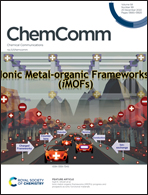Highly electrophilic silver carbenes
Abstract
Catalytic carbene transfer reactions are fundamental transformations in modern organic synthesis, which enable direct access to diverse structurally complex molecules. Despite diazo precursors playing a crucial role in catalytic carbene transfer reactions, most reported methodologies take into account only diazoacetates or related compounds. This is primarily because diazoalkanes, unless they contain a resonance stabilizing group, are more susceptible to violent exothermic decomposition. In this feature article, we present an alternative approach to carbene-transfer reactions based on the formation of highly electrophilic silver carbenes from N-sulfonylhydrazones, where the high electrophilicity of silver carbenes stems from the weak interaction between silver and the carbenic carbon. These precursors are readily accessible, stable, and environmentally sustainable. Using the strategy that employs highly electrophilic silver carbenes, it is possible to develop novel intermolecular transformations involving non-stabilized carbenes, including C(sp3)–H insertion, C(sp3)–C(O) insertion, cycloaddition, and defluorinative functionalization. The silver-catalyzed carbene transfer reactions described here have high efficiency, unusual reactivity, exceptional selectivity, and a reaction pathway that differs from typical transition metal-catalyzed reactions. Our research provided fundamental insight into silver carbene chemistry, and we hope to apply this mode of catalysis to other more general transformations, including asymmetric transformations.



 Please wait while we load your content...
Please wait while we load your content...